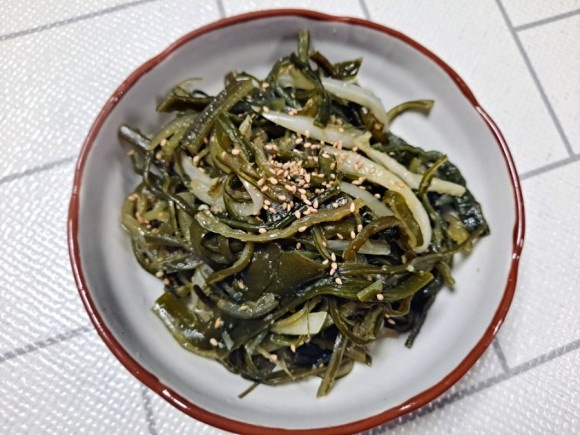
How to make stir-fried seaweed stems / Make side dishes
I don't know if it's because I ate a lot of packaged food with delivery food
The kids had an allergic reaction once in a while.
So I've been working hard on home-cooked meals.
It's filling to make side dishes and soups from time to time.
If I put it in bibimbap today
It's like licorice
If you make it, it can be a reliable side dish
I'll show you how to make 'Stir-fried Seaweed'.
Shall we make it together?
4 serving
Within 30 minutes

라피네
- Ingredients
-
-
salted seaweed300g
-
onion1/2ea
-
Cooking oil3T
-
crushed garlic1T
-
Water50ml
-
thick soy sauce2T
-
cooking wine2T
-
Sesame oil2T
-
Sesamelittle
-
- Cooking Steps
-
STEP 1/13I bought salted seaweed at the mart.
 STEP 2/13If you rinse the seaweed stem 2-3 times in water, you can see that the bottom of your cheek is full of salt.
STEP 2/13If you rinse the seaweed stem 2-3 times in water, you can see that the bottom of your cheek is full of salt.
Shake off the salt and soak it in water to remove the remaining saltiness.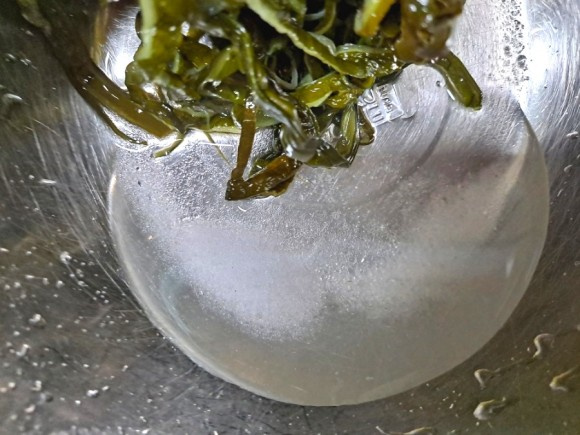 STEP 3/13In my experience, about 20 minutes is appropriate to take out the salty taste.
STEP 3/13In my experience, about 20 minutes is appropriate to take out the salty taste.
After 20 minutes, I'm going to eat a bit of seaweed
It's not salty, but it tastes better when you cook it later.
If you soak it for a longer time, the salty taste of the seaweed stems can be gone, making it bland and rather fishy.
I think it's important to call the seaweed stem.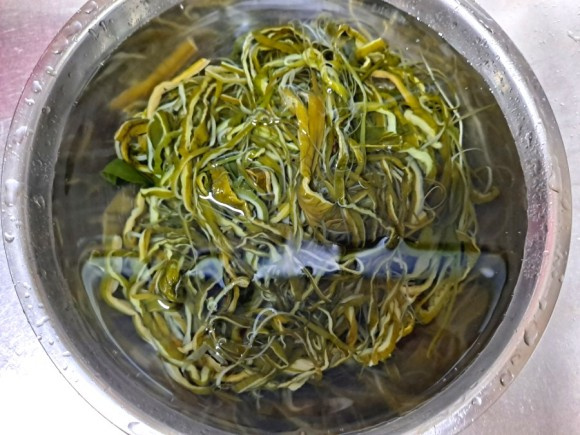 STEP 4/13Chop the onions while removing the salty taste from the seaweed stems.
STEP 4/13Chop the onions while removing the salty taste from the seaweed stems.
If you have carrots, it's good to color them, so you can prepare a little.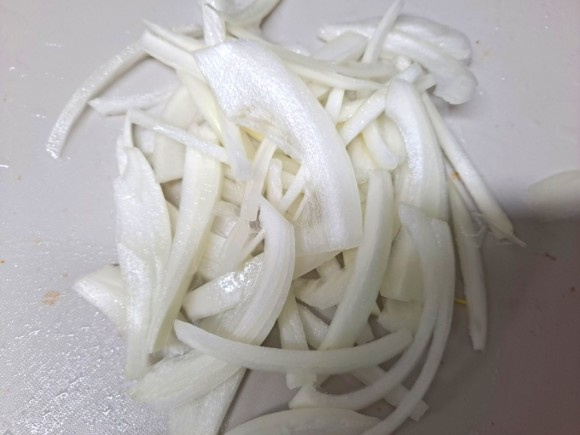 STEP 5/13Soak it for about 20 minutes and wash it quickly
STEP 5/13Soak it for about 20 minutes and wash it quickly
Rinse on a strainer and drain.
And cut it into bite-size pieces. STEP 6/13Grease the pan
STEP 6/13Grease the pan STEP 7/13Add 1T of minced garlic and stir-fry until it smells like garlic.
STEP 7/13Add 1T of minced garlic and stir-fry until it smells like garlic.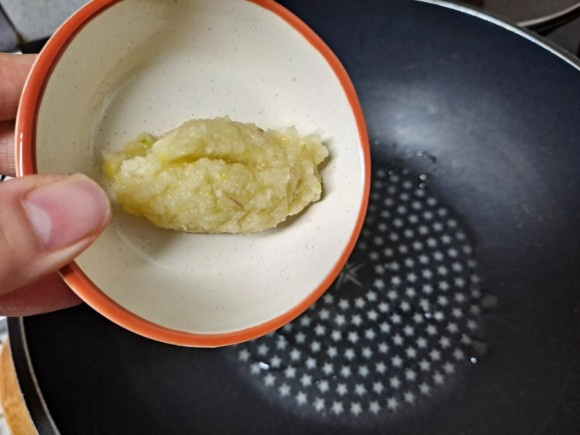 STEP 8/13Then, add the seaweed stem
STEP 8/13Then, add the seaweed stem
Stir-fry until garlic oil is coated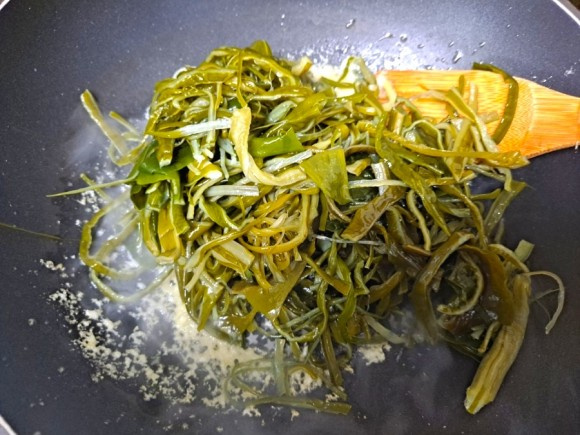 STEP 9/13Add 2T of cooking wine to remove the fishy smell from the seaweed stems.
STEP 9/13Add 2T of cooking wine to remove the fishy smell from the seaweed stems.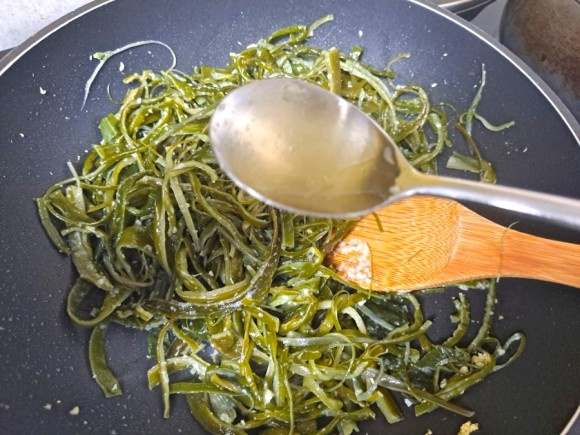 STEP 10/13Add chopped onions and stir-fry, and when the onions are slightly cooked, add 50ml of water and stir-fry until the seaweed stems are moist.
STEP 10/13Add chopped onions and stir-fry, and when the onions are slightly cooked, add 50ml of water and stir-fry until the seaweed stems are moist.
Keep the heat medium and low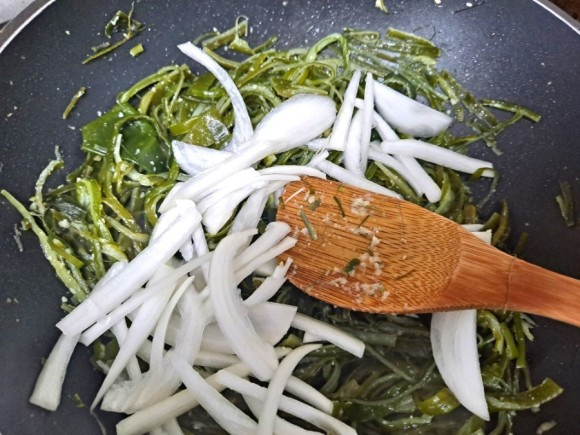 STEP 11/13Stir-fry 2T of thick soy sauce and 2T of sesame oil and finish it with sesame seeds.
STEP 11/13Stir-fry 2T of thick soy sauce and 2T of sesame oil and finish it with sesame seeds. STEP 12/13It's stir-fried seaweed that's not fishy.
STEP 12/13It's stir-fried seaweed that's not fishy.
It's one of the ingredients that my husband finds every time he eats bibimbap.
If you add stir-fried seaweed stems when you eat bibimbap with vegetables, the texture is art.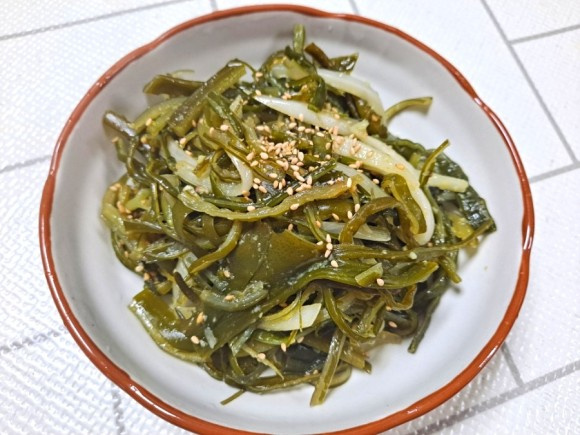 STEP 13/13If you keep the time when the seaweed stems are called, you're half successful!!
STEP 13/13If you keep the time when the seaweed stems are called, you're half successful!!
Make it delicious and eat it^^
- Japchae Recommended recipe
-
-
1
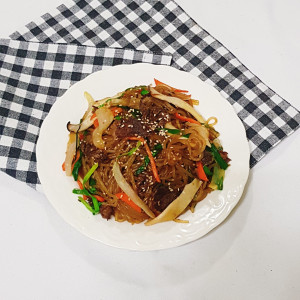 Golden recipe for japchae (It's not hard to make japchae~!!)4.92(12)
Golden recipe for japchae (It's not hard to make japchae~!!)4.92(12) -
2
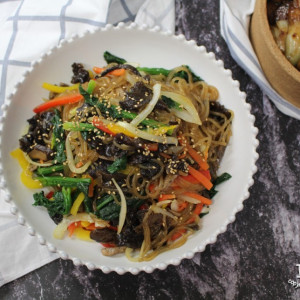 How to make non-soggy japchae! It's easier than you think5.00(16)
How to make non-soggy japchae! It's easier than you think5.00(16) -
3
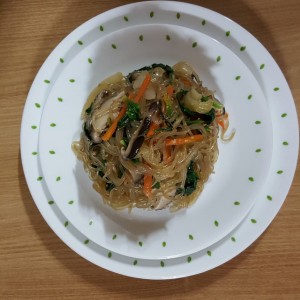 Making japchae easily and quickly4.83(12)
Making japchae easily and quickly4.83(12) -
4
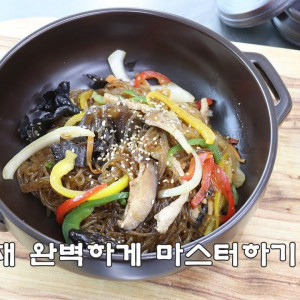 Many reviews acknowledged the recipe for japchae~ How to make ja4.79(14)
Many reviews acknowledged the recipe for japchae~ How to make ja4.79(14)
-
- chicken Recommended recipe
-
-
1
 Ryu Soo-young Galbi Chicken Pyeon-storang 25 minutes Complete Eo5.00(9)
Ryu Soo-young Galbi Chicken Pyeon-storang 25 minutes Complete Eo5.00(9) -
2
 In vain... On the knife... On the knife!!!!!!Curry Oven Chicken5.00(8)
In vain... On the knife... On the knife!!!!!!Curry Oven Chicken5.00(8) -
3
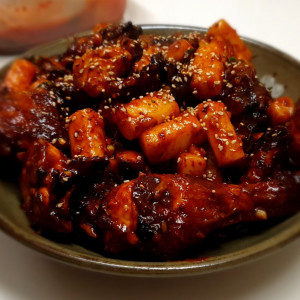 Imitating ZICOBA chicken 100%4.93(254)
Imitating ZICOBA chicken 100%4.93(254) -
4
 [Simple] Make delicious side dishes with leftover chicken5.00(11)
[Simple] Make delicious side dishes with leftover chicken5.00(11)
-